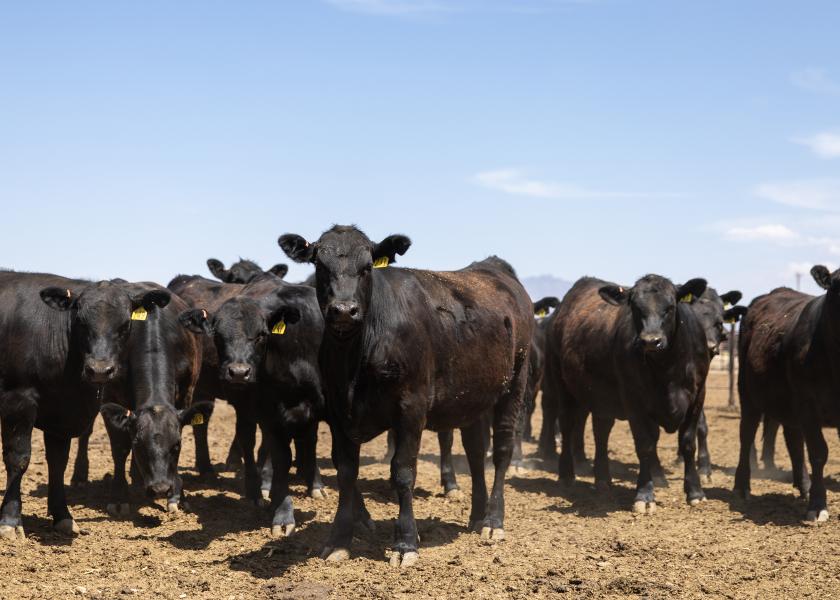Q&A With a Veterinarian: Bovine Lameness

Lameness is one of the costliest animal health issues impacting the cattle industry, and it’s a topic of great interest to Lacey Fahrmeier, DVM, Valley Vet Supply Technical Service Veterinarian. During her time at Kansas State University, she conducted research in bovine lameness, and she treats a number of cases at her veterinary clinic in Southern Montana.
Better understand this animal health risk – and read to the end for her No. 1 key takeaway for producers – in this Q&A with Dr. Fahrmeier.
Q: Why is bovine lameness such a condition of interest to you, Dr. Fahrmeier? “Not only is it one of the costliest animal health issues to our industry, it’s also a major animal welfare concern that we can mitigate. During my time at Kansas State University, I was fortunate to be part of a team that conducted bovine lameness research. And being raised in the purebred side of the beef business I saw first-hand how important structural correctness, foot angle and hoof health were to a breeding program’s success and longevity. It’s obvious that from a business perspective, lameness is a big issue. Additionally, it’s a growing welfare concern. We all strive for our cattle to be healthy and maximize their genetic potential. Unfortunately, the chronic pain caused by lameness can lead to rapid deterioration and becomes a serious welfare issue. Minimizing the amount and length of time those animals are in discomfort is crucial.”
Q: What negative implications, in addition to overall welfare, can result from lameness? “Bovine lameness is the second-most costly animal health issue in the beef industry, next to bovine respiratory disease. It costs the industry in decreased weight gain and its negative impact on longevity in the cow herd. When cattle are lame, their cortisol levels rise due to the severe pain. This increase in stress hormones can negatively impact a bull’s semen quality and also lead to reduced cow fertility and higher rates of early embryonic death loss. A huge hit to our industry’s bottom line, of course, is lost performance in the form of decreased weight gain, when those lame cattle aren’t getting to the bunk as frequently or out grazing.”
Q: What causes lameness in cattle? “Nutrition can be a big contributing factor to lameness and is one that we can actually control. When cattle are fed a high-carbohydrate, “hot” ration, and do not receive enough forage in the diet, we can see rumen acidosis develop (meaning their rumen pH is too low from the excessive carbohydrates they're ingesting). This can lead to poor hoof horn development and conditions like White Line disease and Laminitis (more commonly known as 'founder') that lead to chronic pain and inflammation.
Genetics definitely contribute to lameness risk. When purchasing new genetics or deciding which animals to retain in your herd, place a high priority on good hoof quality (no cracks or overgrowth), proper foot angle, and structural correctness to prevent lameness issues down the road. Many hoof problems have been proven to be heritable.
The environment can also be a factor. Running cattle in rough country with lots of sharp rocks and difficult terrain can cause abrasions in the skin and hooves. In challenging environments, you may need to check cattle more often to make sure that bacteria haven’t taken advantage of that opportunity to invade where the skin barrier has been damaged. Having freestanding water and excess mud in pastures can predispose cattle to more foot rot issues as well. Concrete flooring, whether in dairies or in working systems, wears down their toes, which causes the soles to become thinner. This can also lead to toe abscesses and infection in the P3 bone located at the end of their toe.”
Q: With regard to treatment, what should producers consider? “With the advent of dart guns, pasture doctoring looks a bit different than it once did. I still believe there is value in closely assessing the foot (where 90% of lameness is located). Some lameness cases are as simple as a rock between their toes or a sole/toe ulcer that needs to be opened up. Pulling up that foot to see what’s really going on can guide you in the best direction to go for treatment and help you determine if it's something you need to consult your veterinarian on or take to them for more aggressive treatment.”
Q: What is the No. 1 takeaway for producers as it relates to lameness? “The sooner that you recognize and intervene in these lameness cases the better your outcomes will be. I can’t emphasize strongly enough that if you treat a suspected case of 'foot rot' with antibiotics and they don’t show significant improvement in a couple days, they need to be seen by a veterinarian, or at least caught and re-evaluated. Don’t just give another round of antibiotics and waste valuable time while the issue worsens.”
Visit ValleyVet.com to continue learning and to help ensure livestock health.
About Valley Vet Supply
Valley Vet Supply was founded in 1985 by veterinarians to provide customers with trusted animal health solutions. Building on over half a century of experience in veterinary medicine, Valley Vet Supply serves equine, pet and livestock owners with thousands of products and medications. With an in-house pharmacy that is licensed in all 50 states, and verified through the National Association of Boards of Pharmacy (NABP), Valley Vet Supply is the dedicated source for customers’ horse, livestock and pet needs. For more information, please visit ValleyVet.com.








